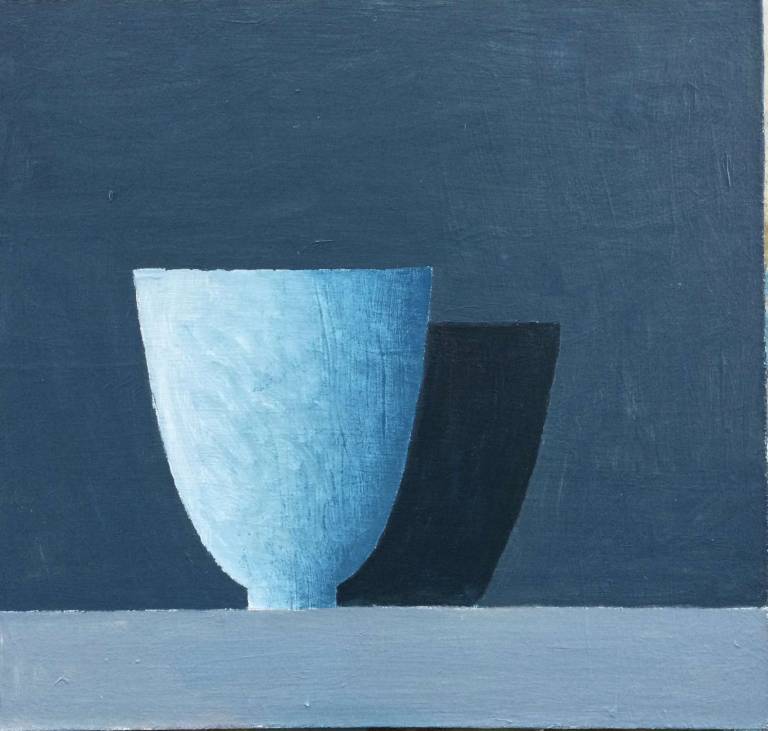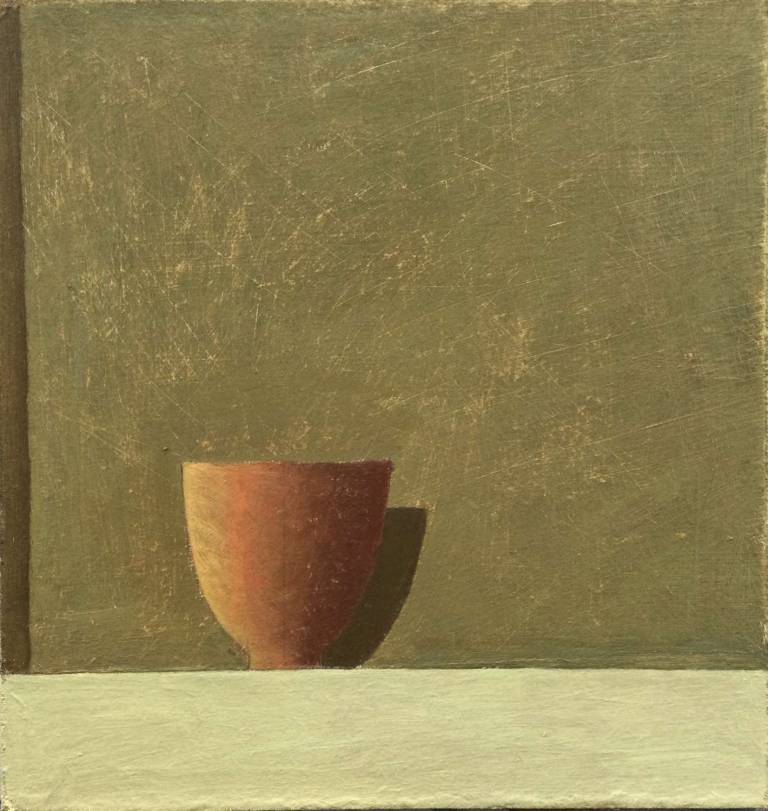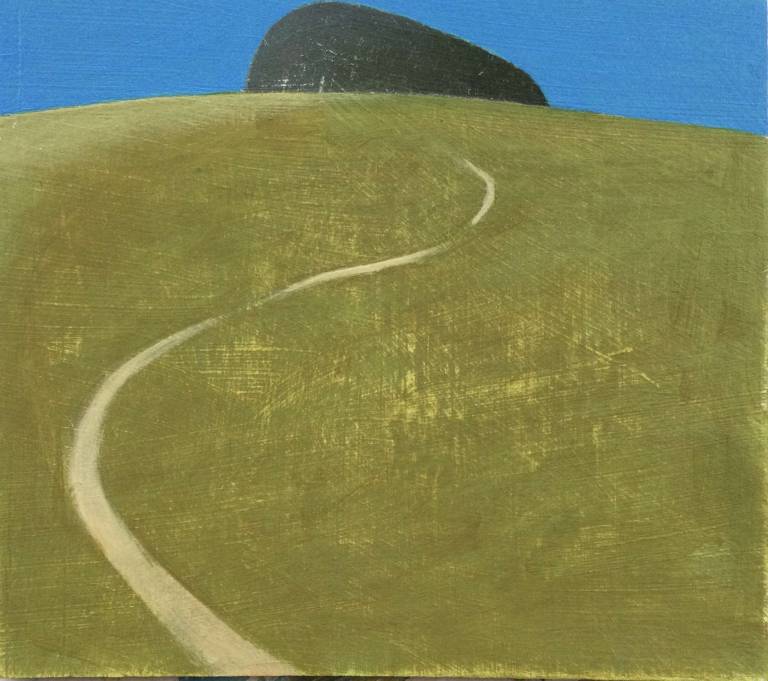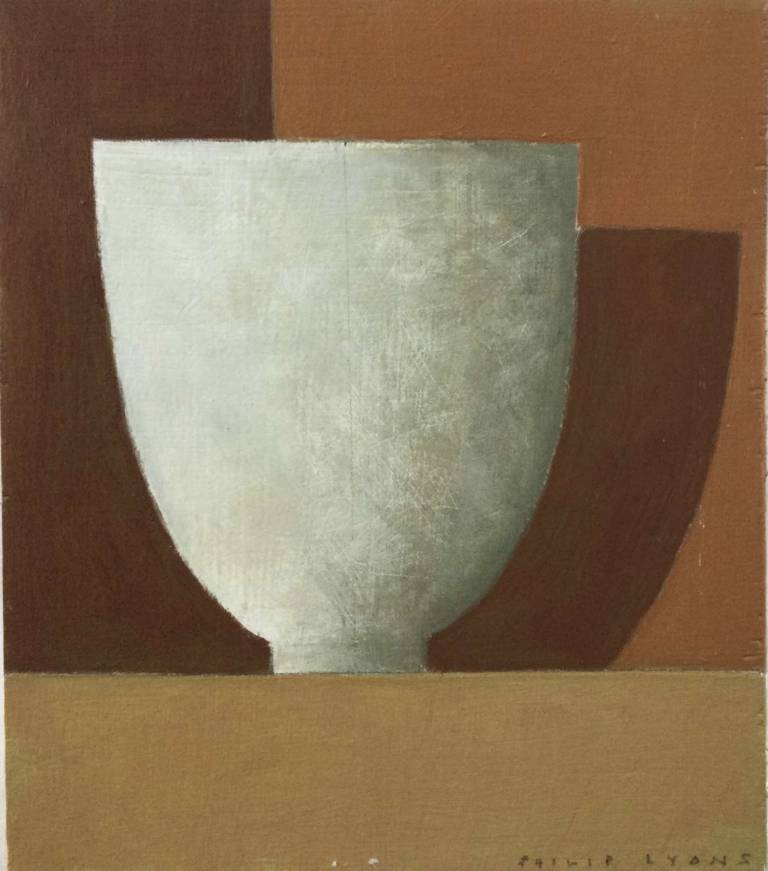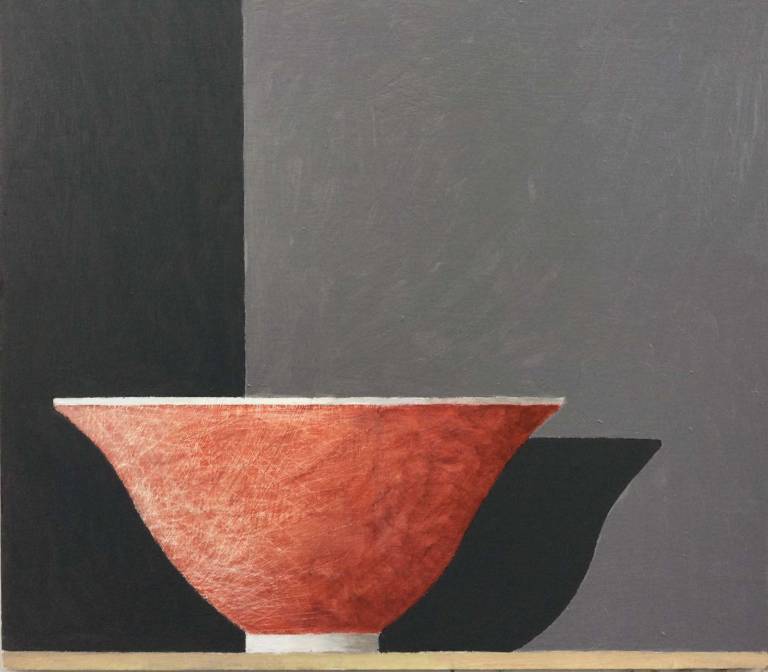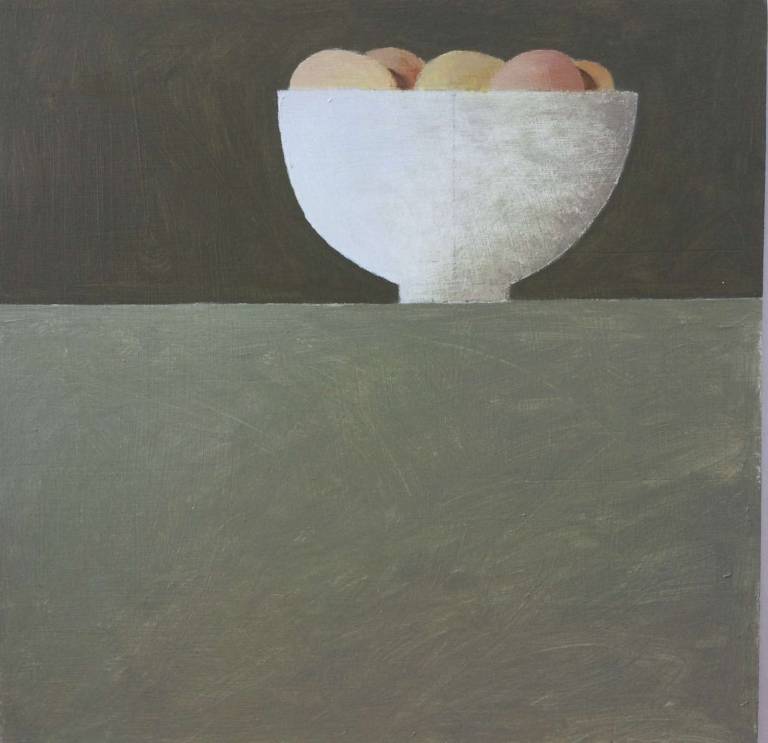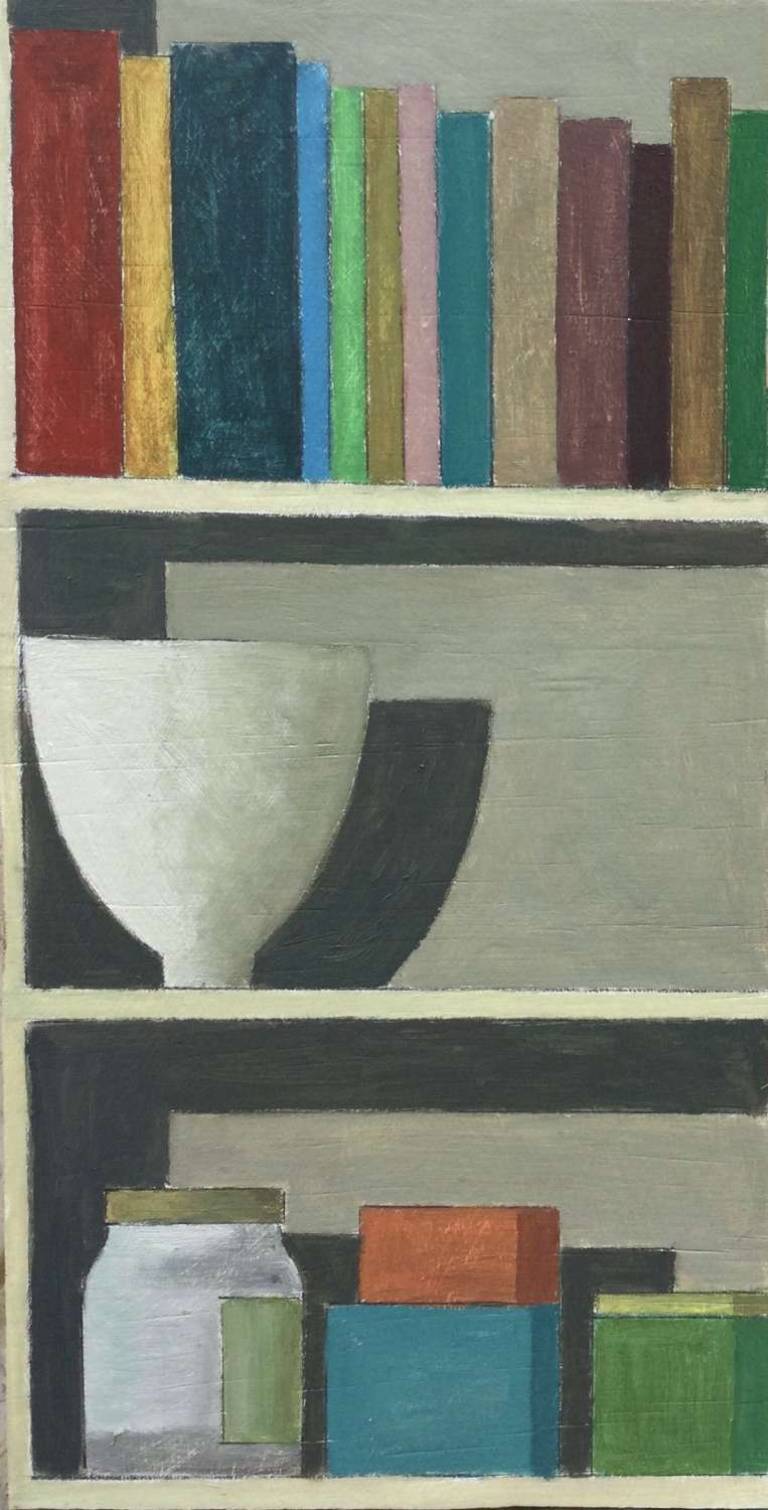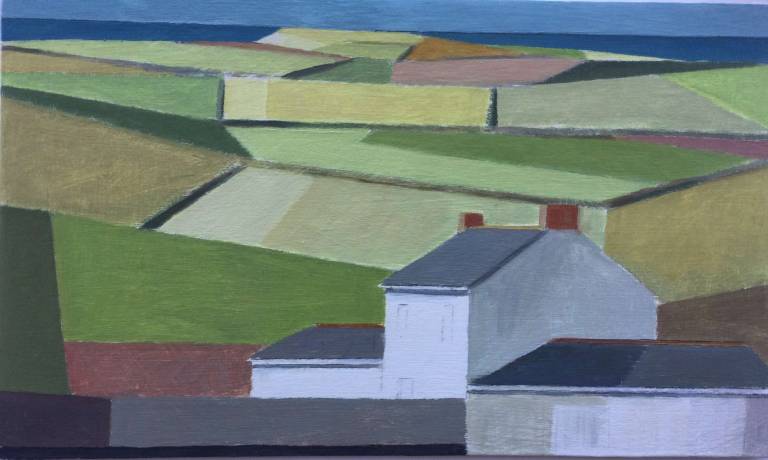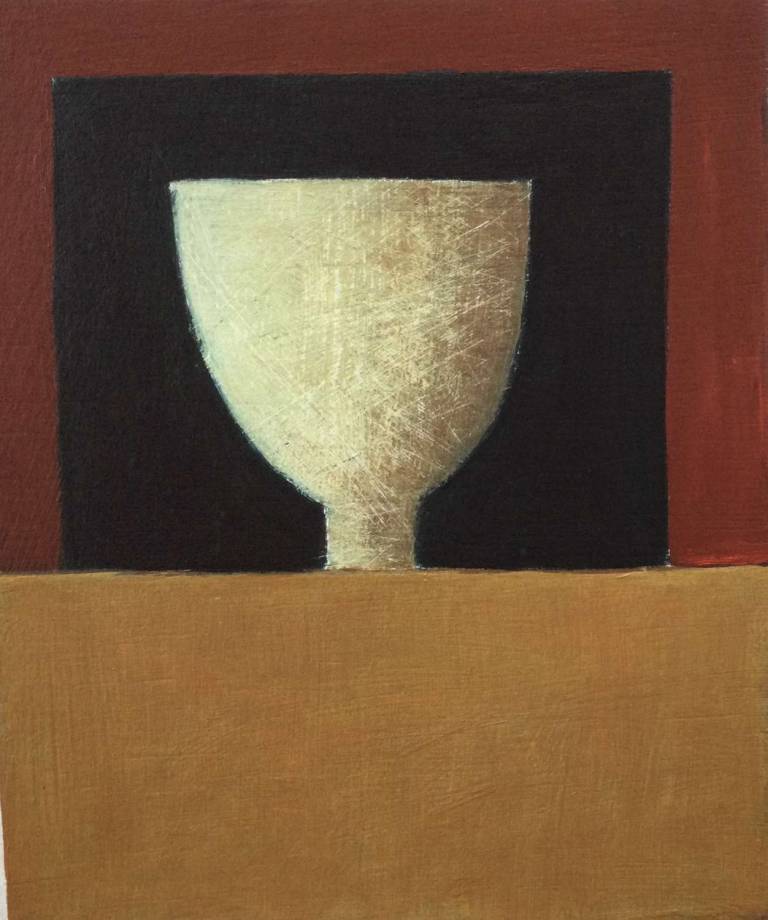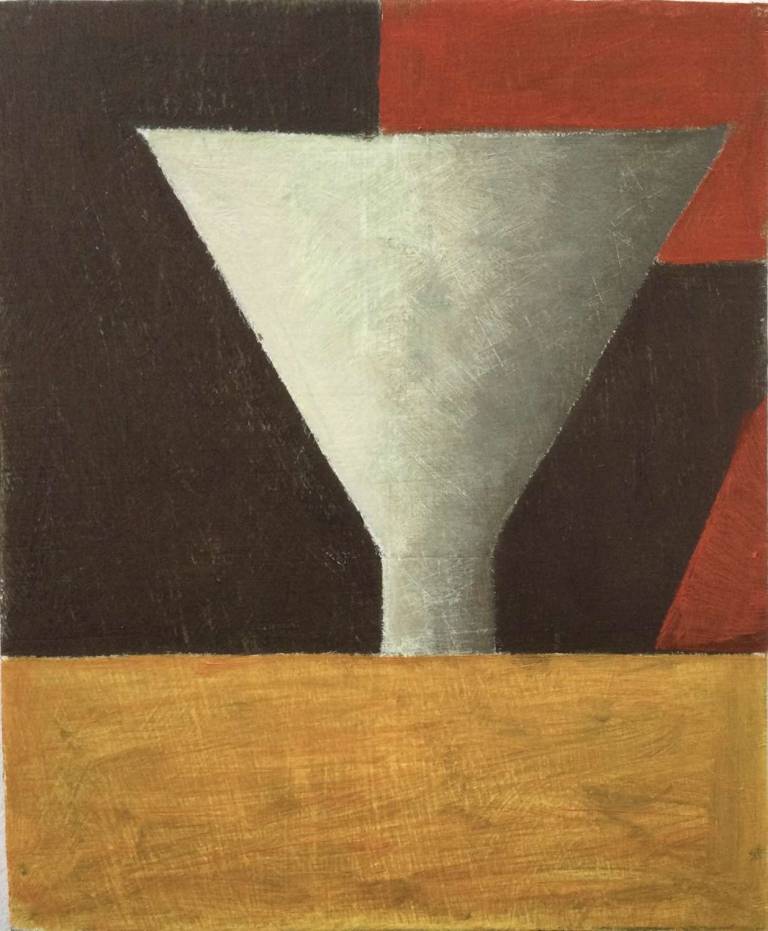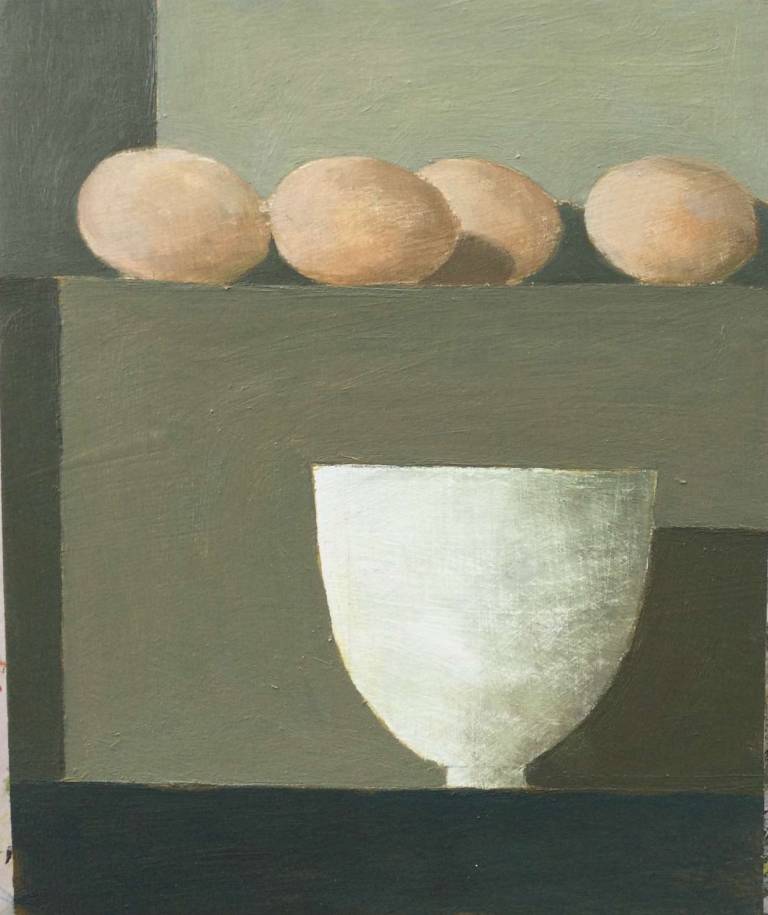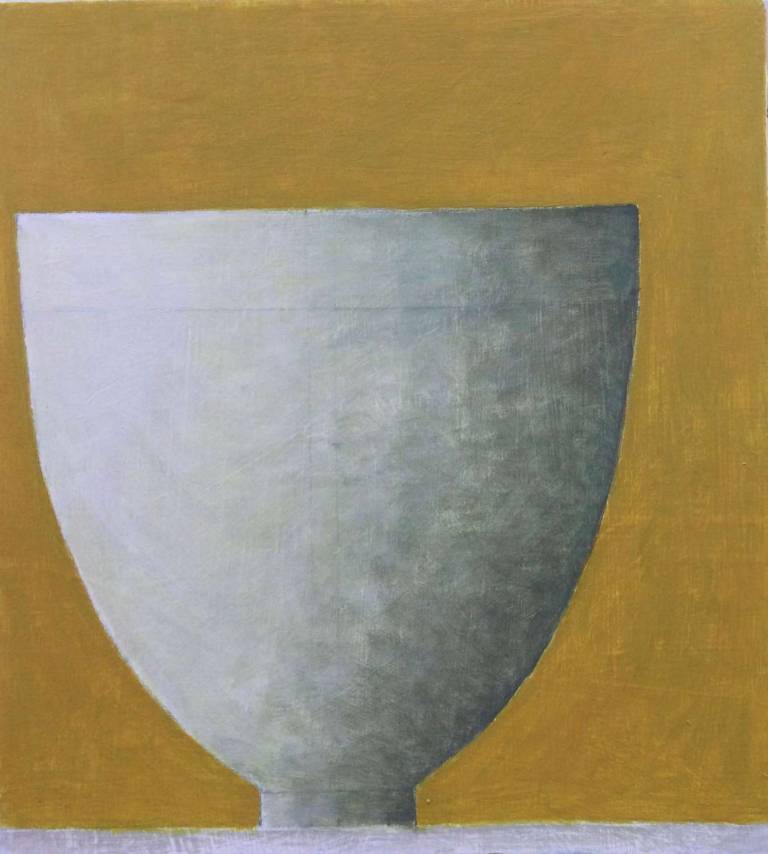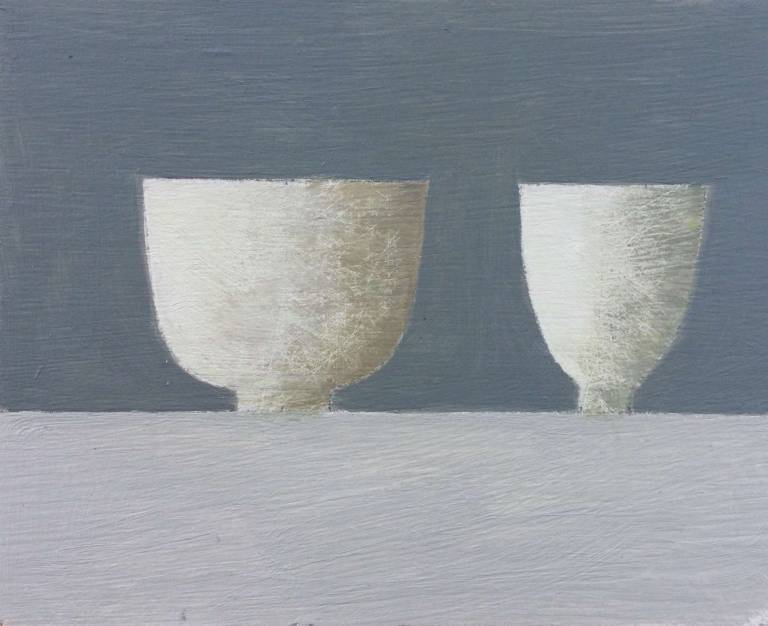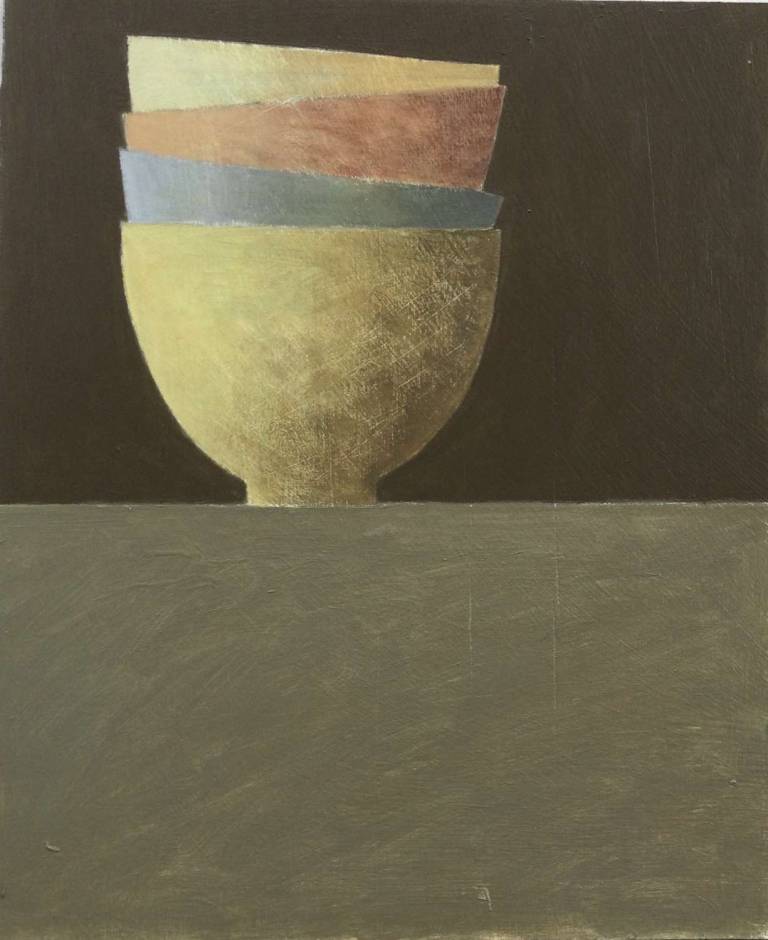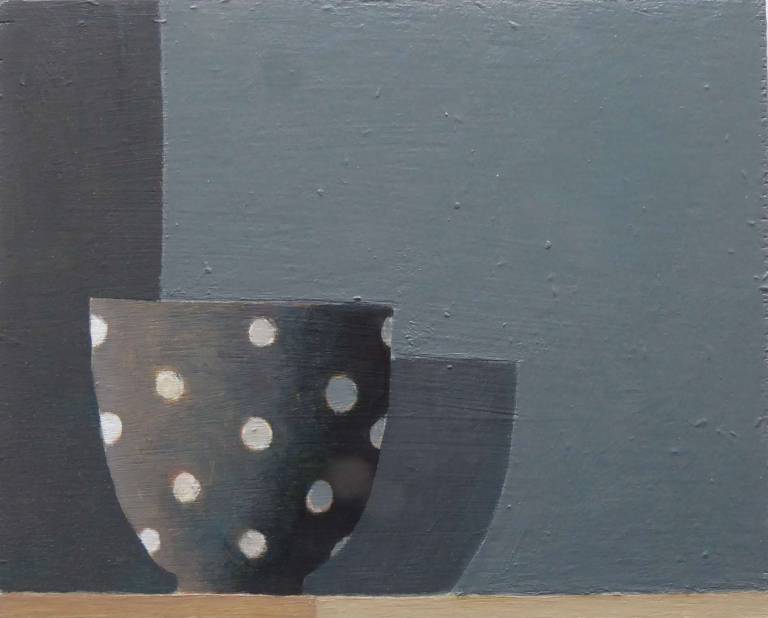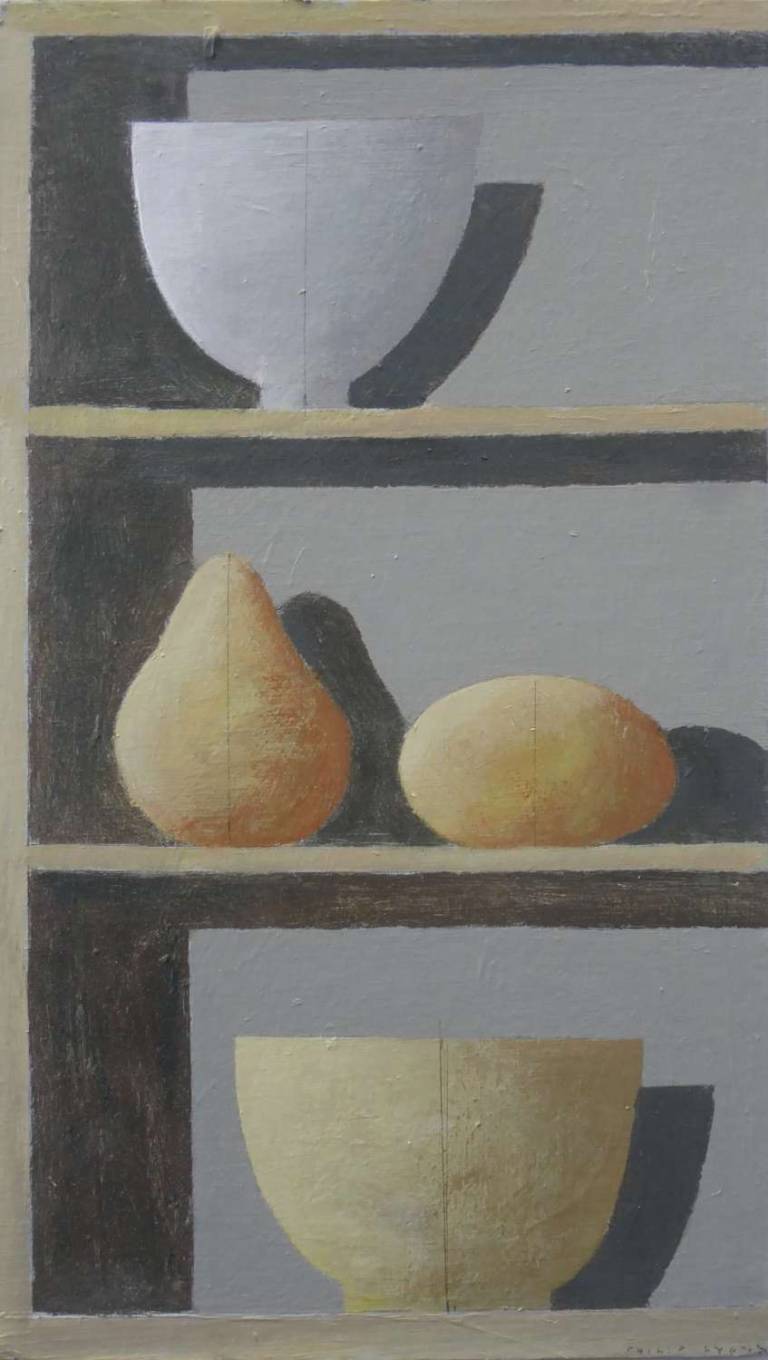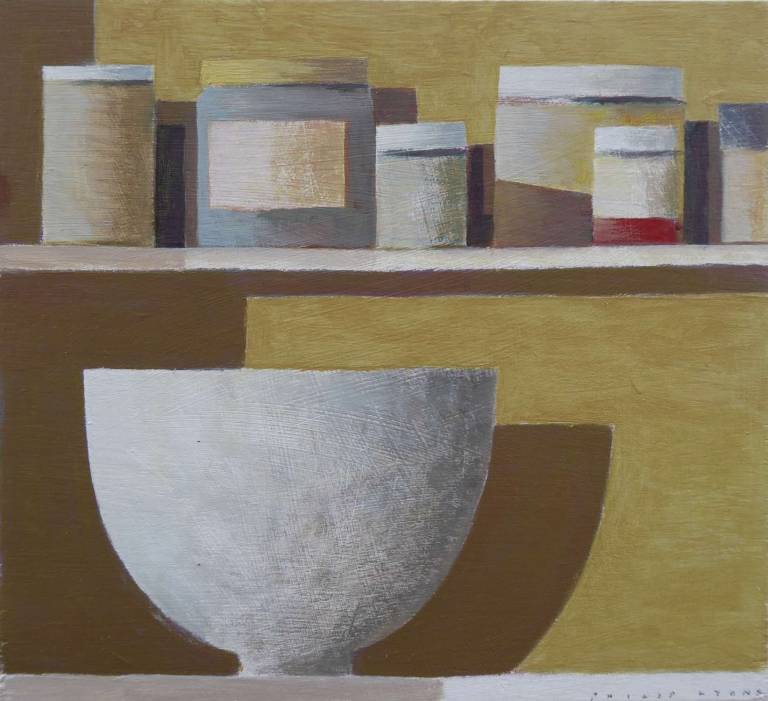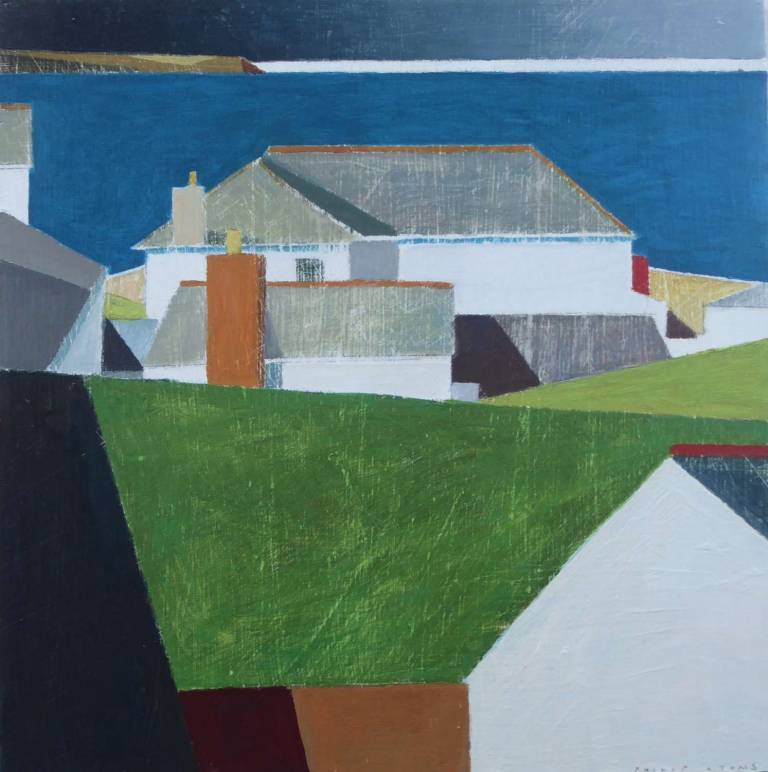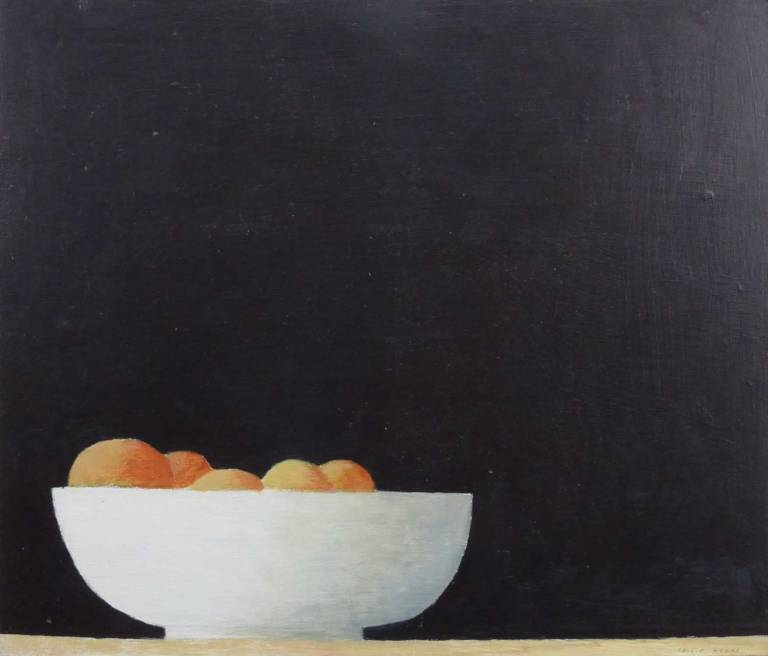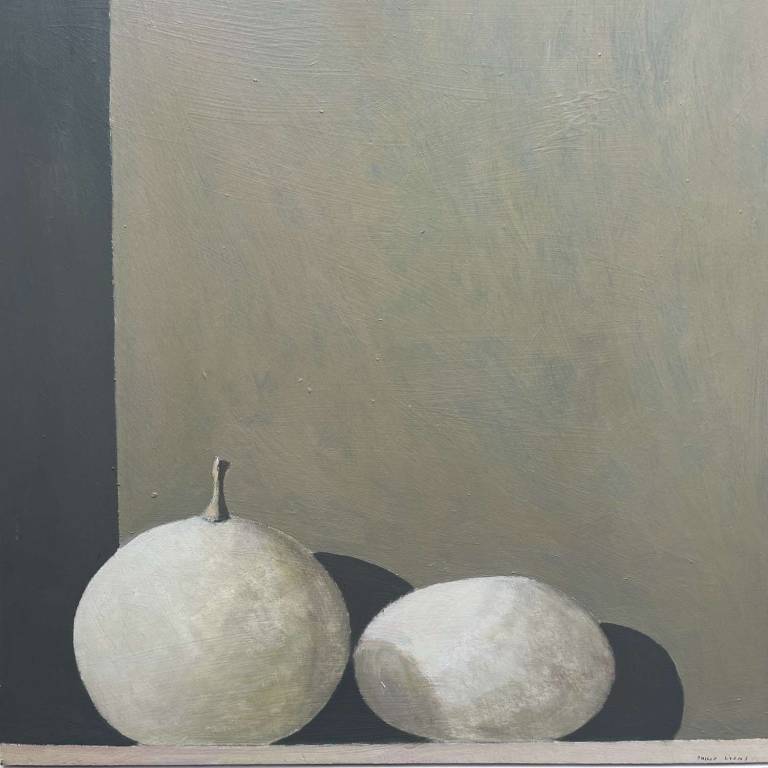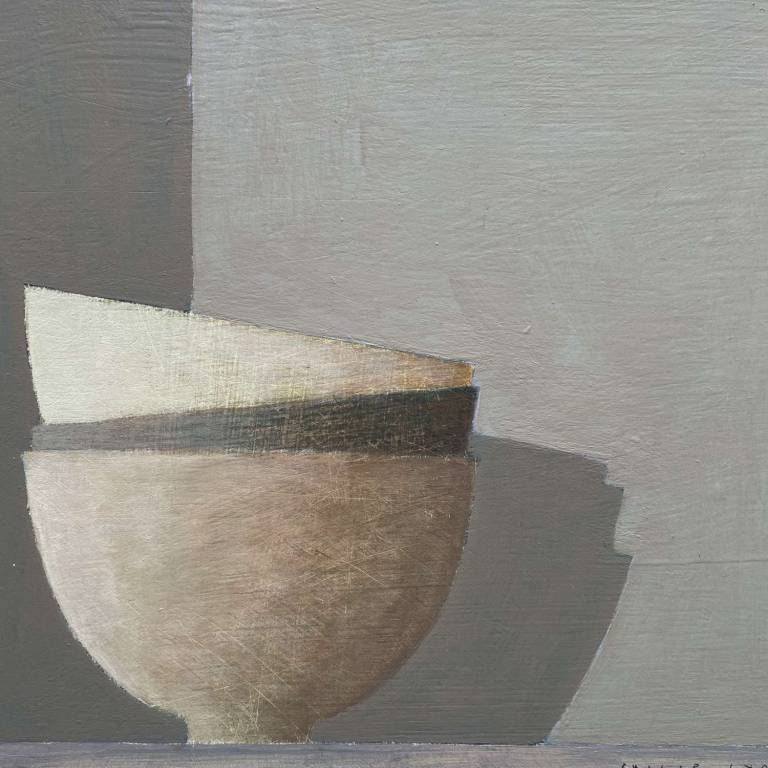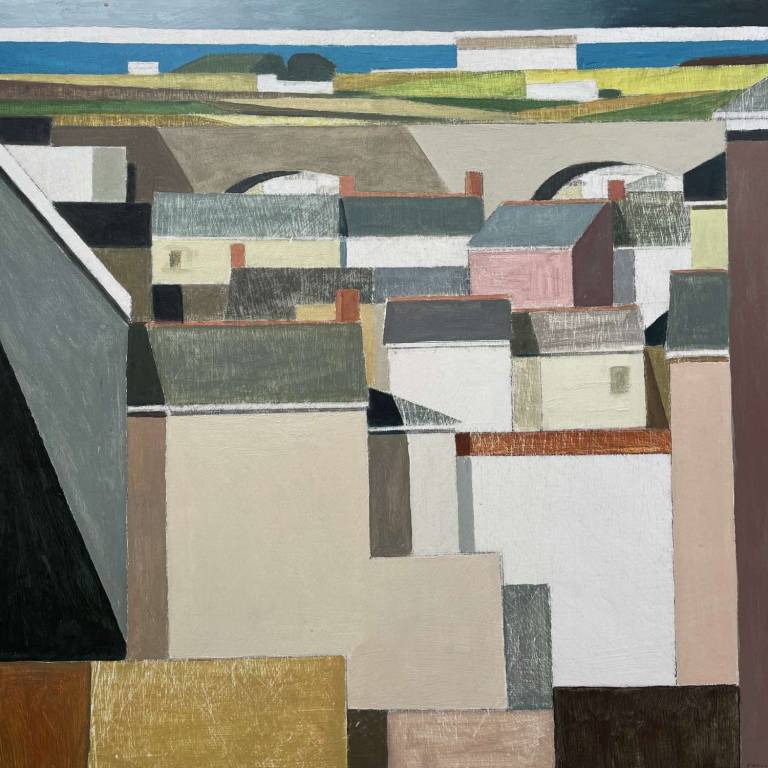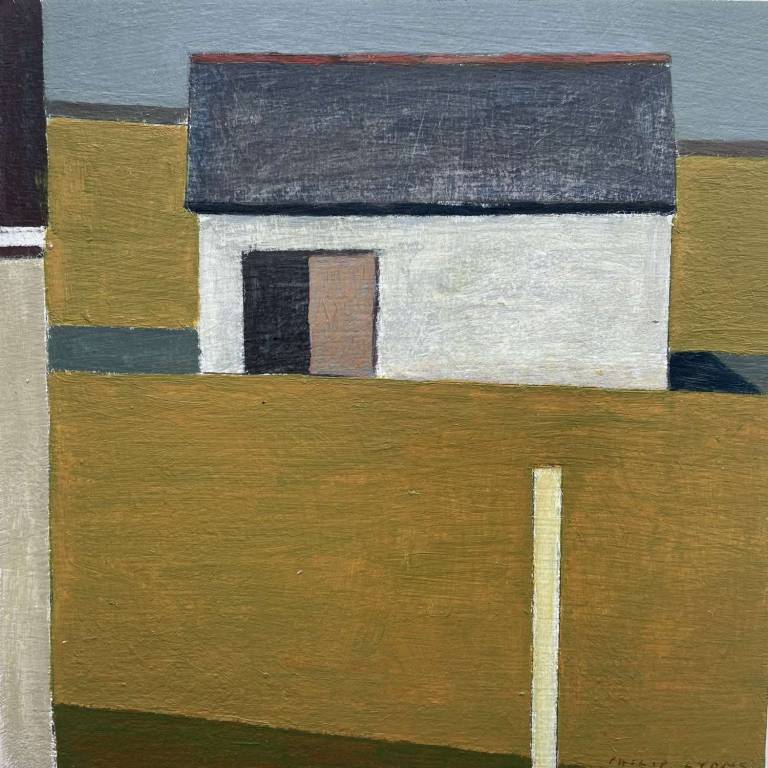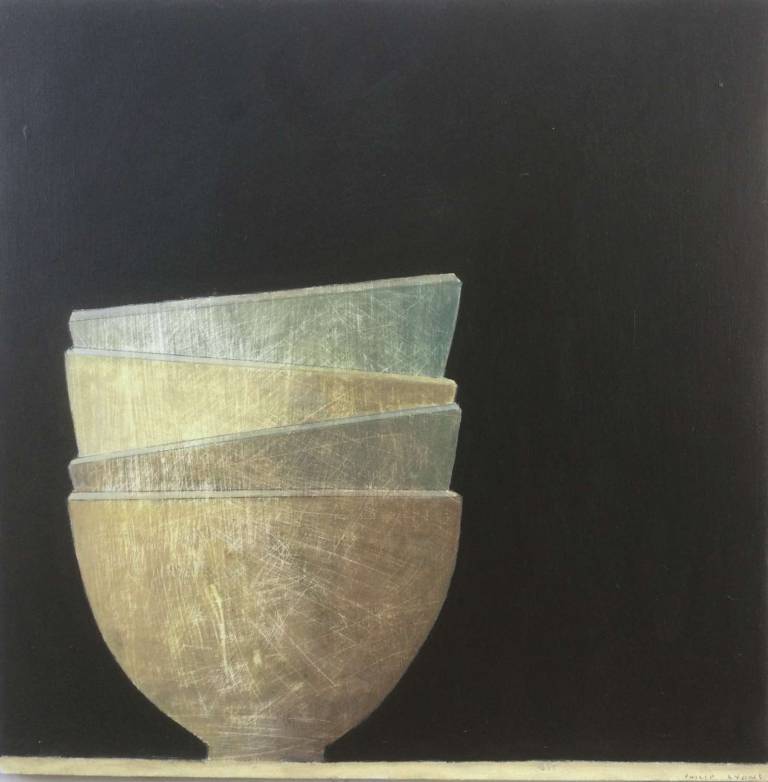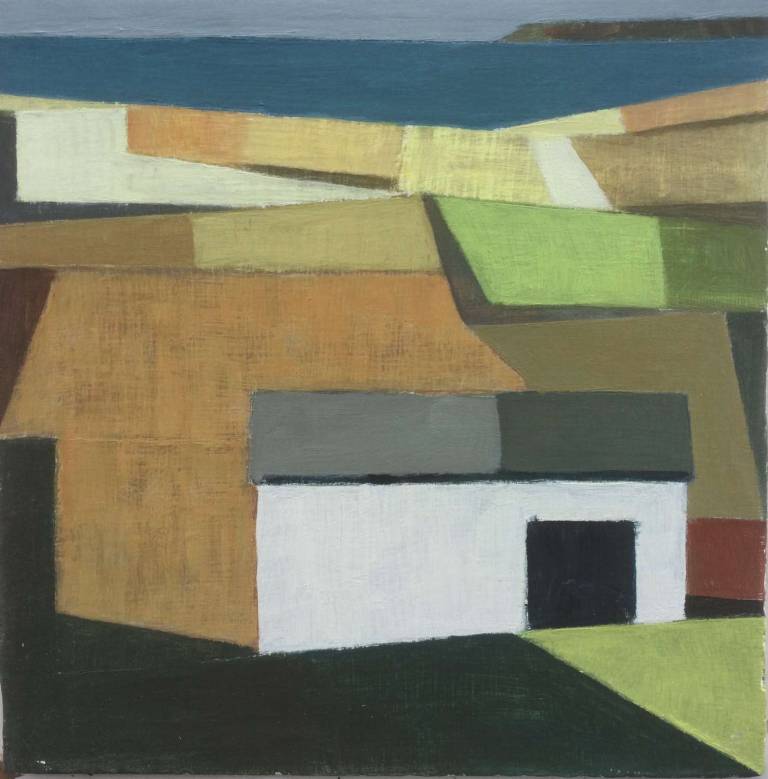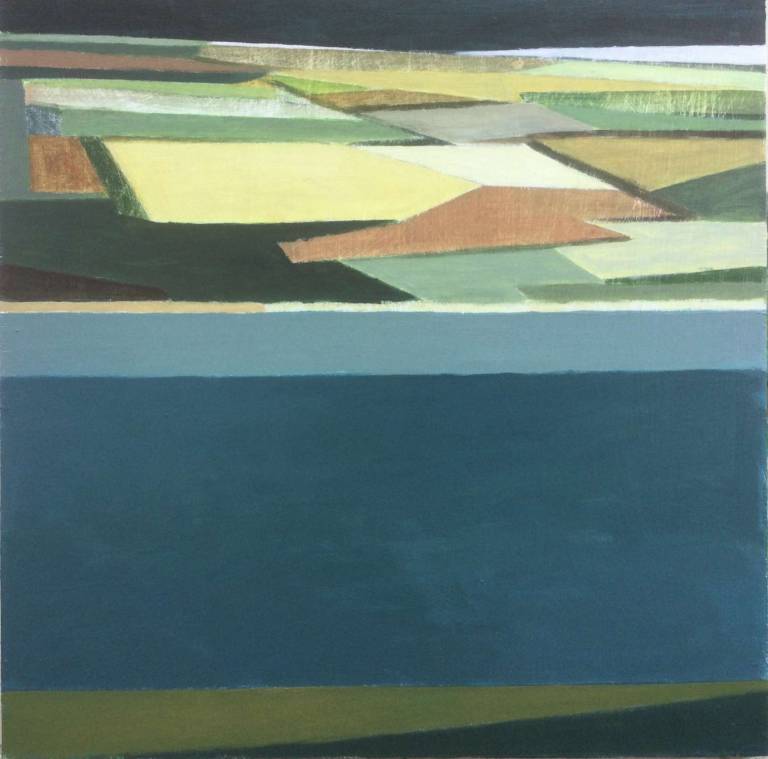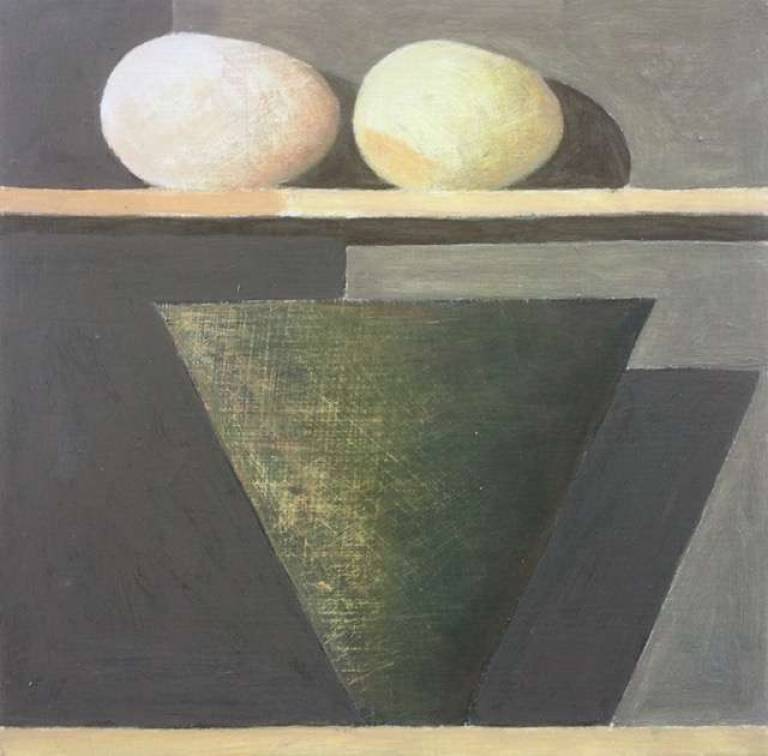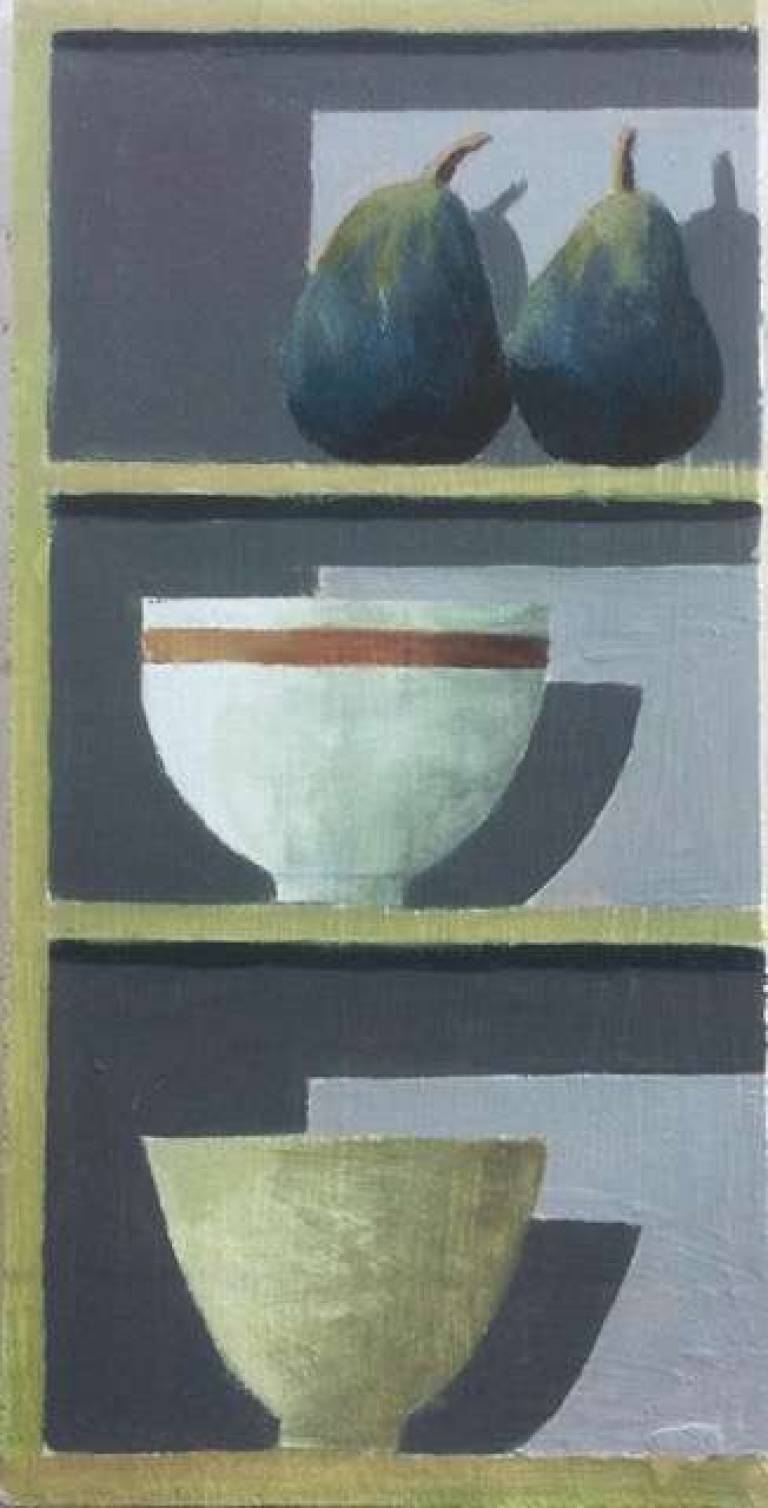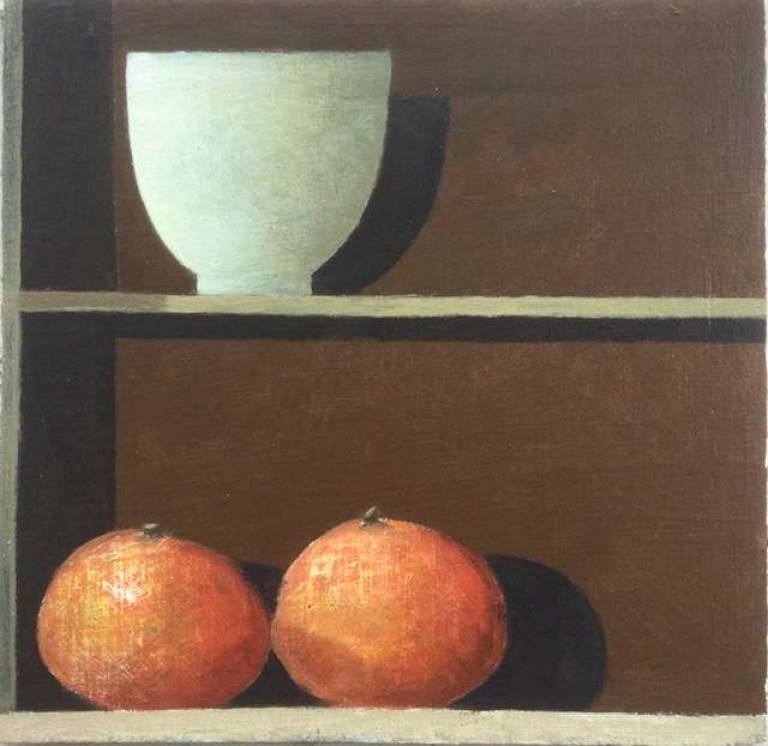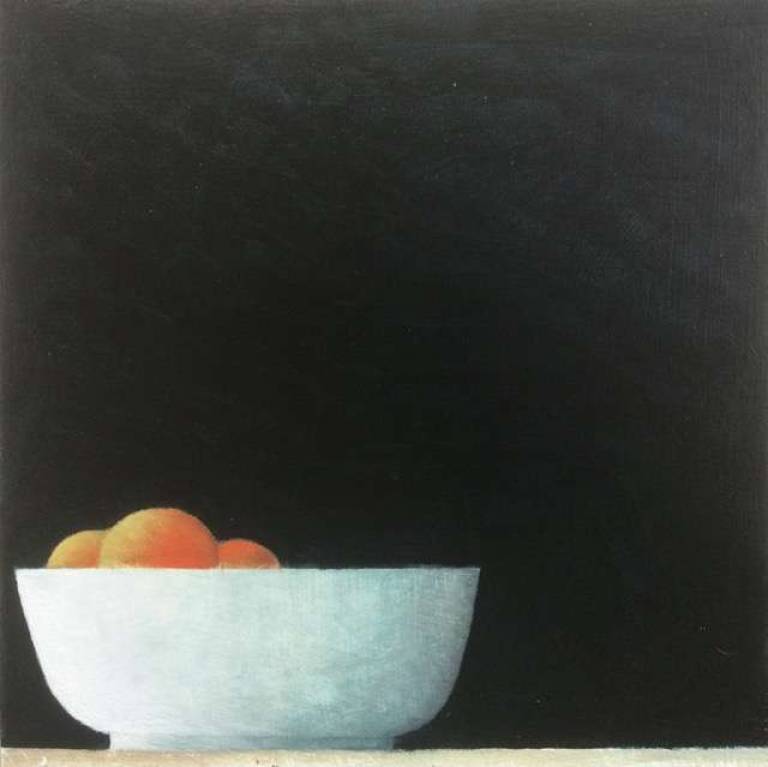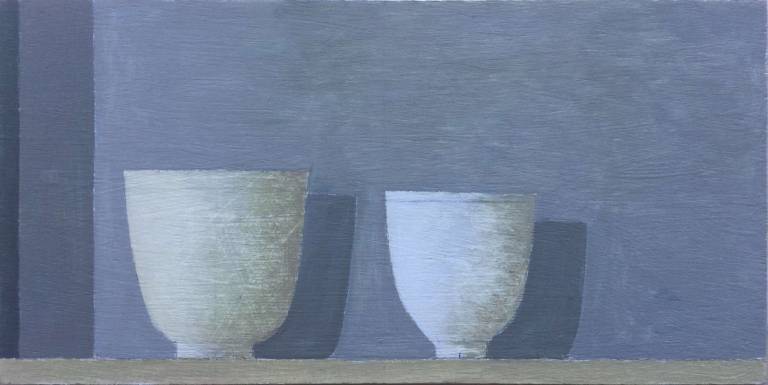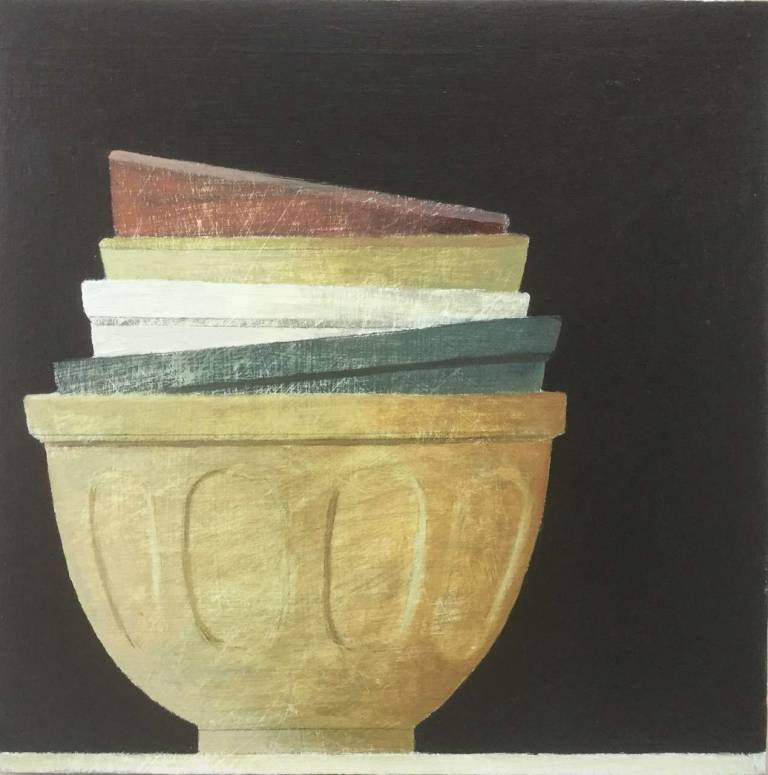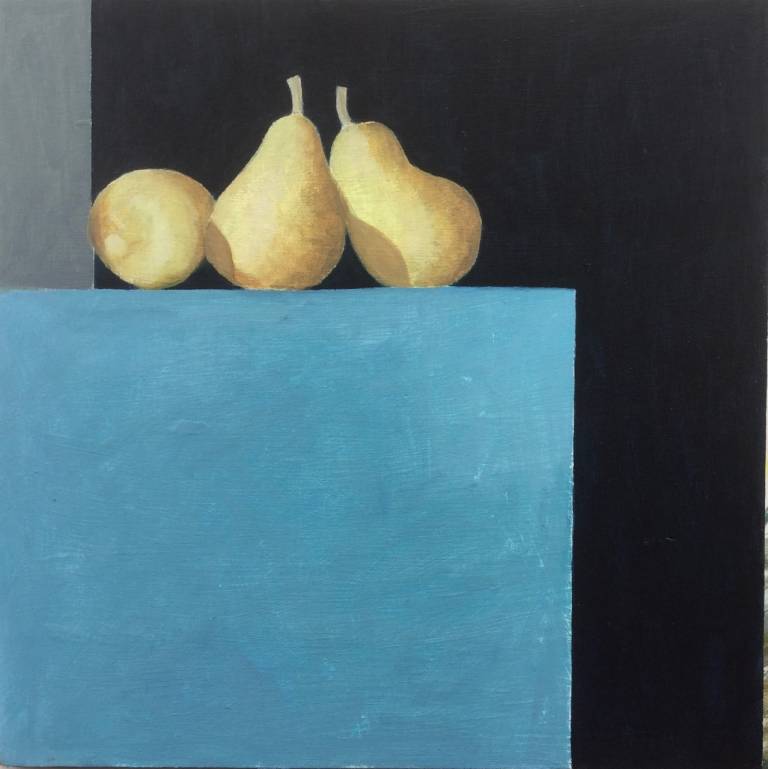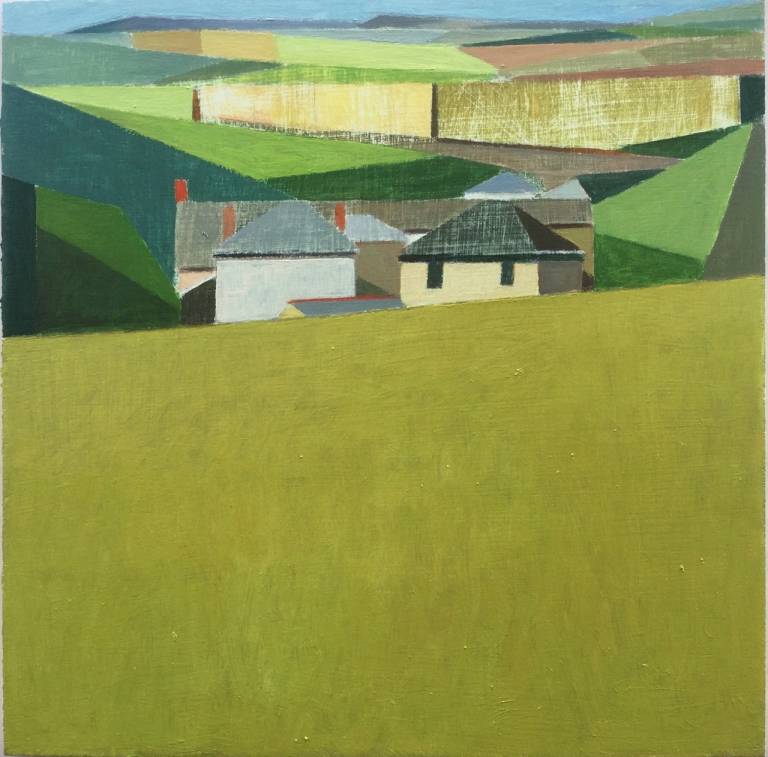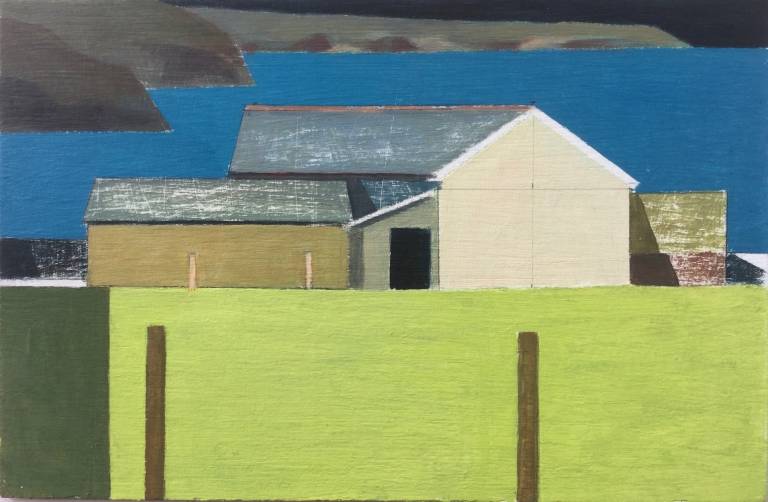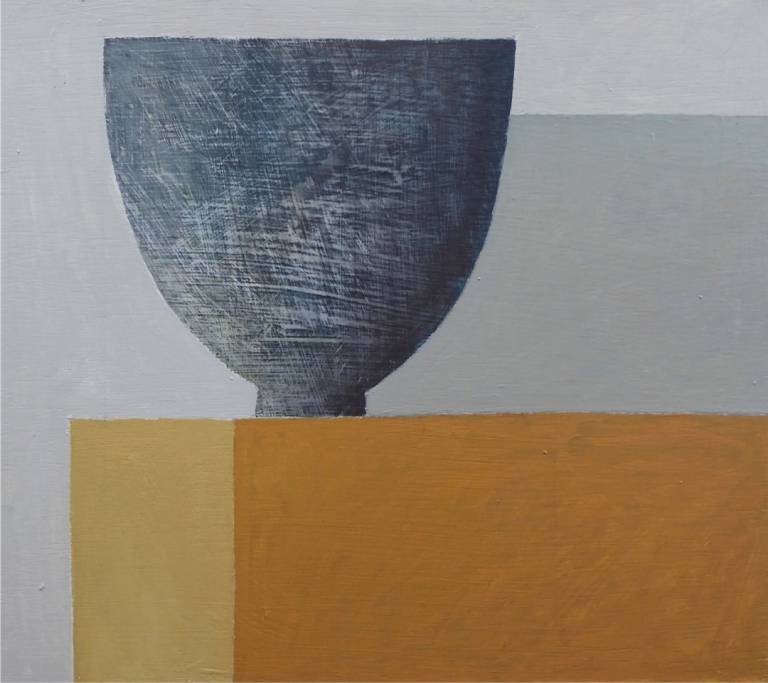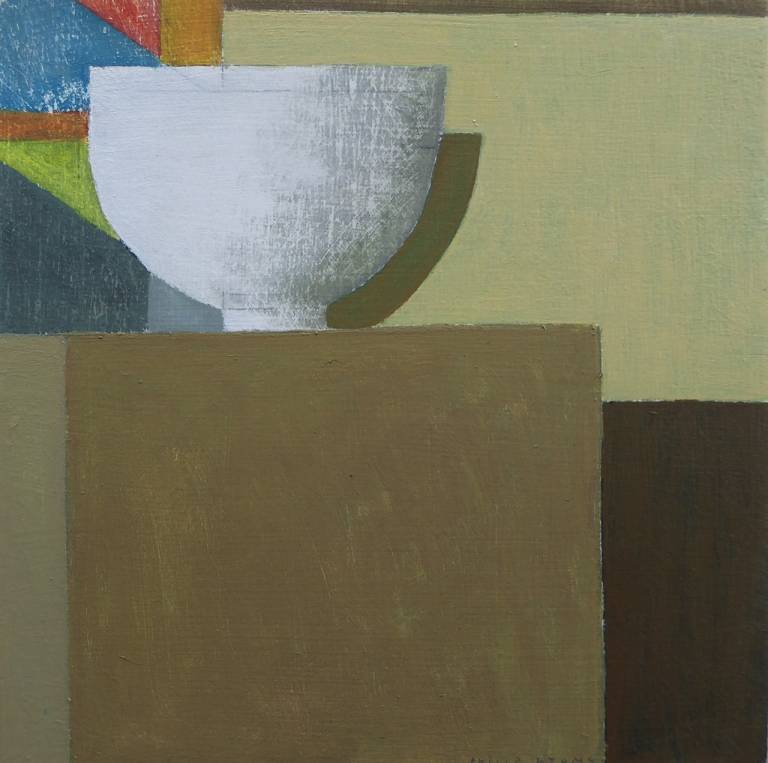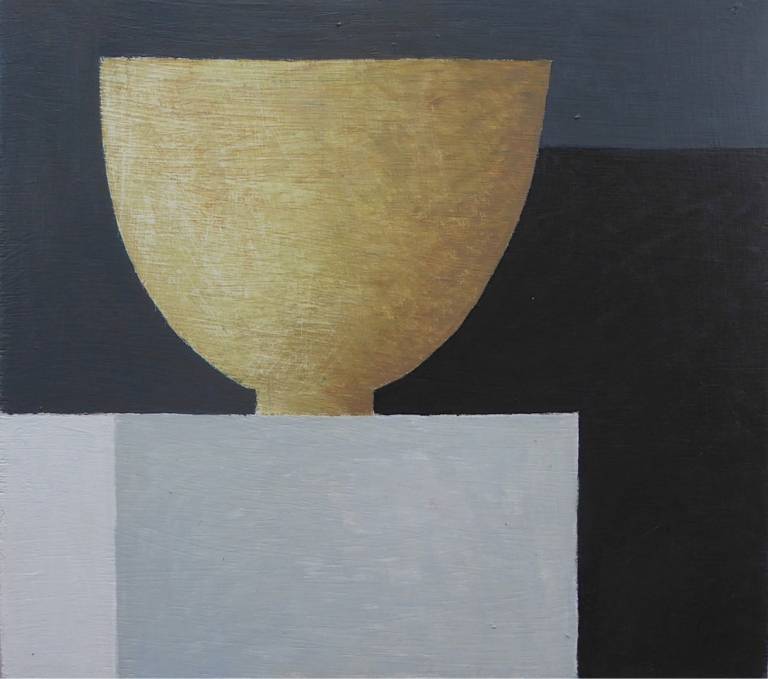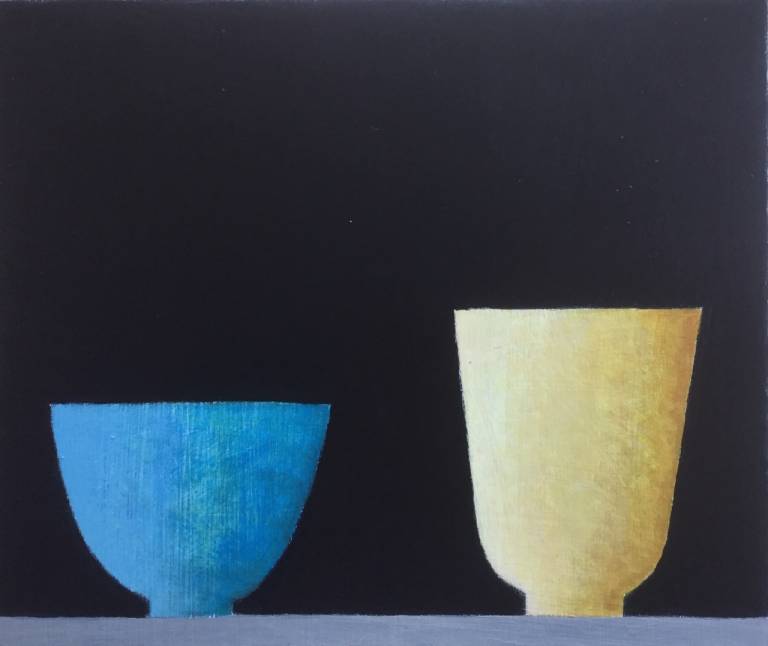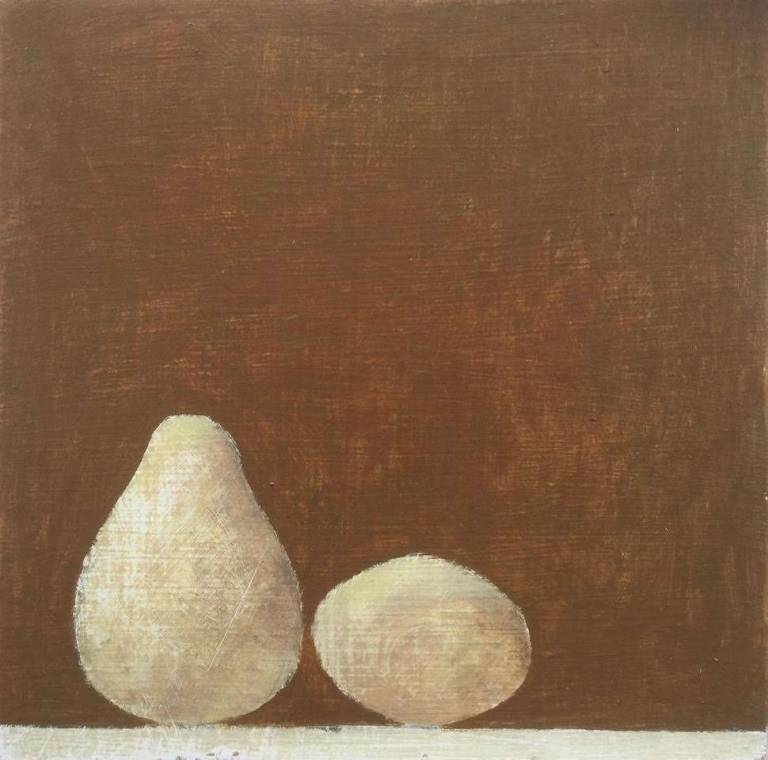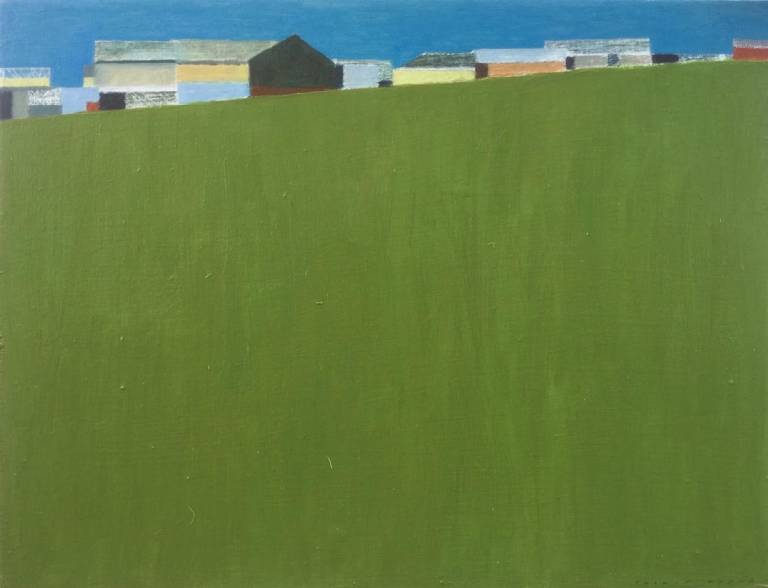‘I use subtle colour and strong pattern in my compositions – locking them together to make a firm structure. I pay attention to the surface of the paintings to create areas that have a sense of history or narrative. There are accents of strong colour to anchor the composition. Recently I have returned to the images of bowls and barns. These are archetypal images of things out of time, they could be new – they could be very old. To me they hold a lot of hope, a sense of continuation, and solid presence.'
Philip Lyons lives and works in Cornwall and spends much of his time out on the coast in remote places. He looks for pattern in the landscape and has developed the use of grids to both enliven the surface and give the impression of changing tone and texture. His paintings shimmer with light and give us glimpses of a Cornwall that is not necessary the picture postcard one. We encounter rooftops, bits of industrial heritage, a view of the sea glimpsed between buildings as well as solitary barns against a landscape. He also paints objects such as bowls, aiming to simplify them and find their essence.
'I look for modest, everyday events and views, such as looking out from a window, light passing over a field, a glimpse of the sea over a hedge and shadows of trees stretching across a field. I often use a grid structure to start a painting, sometimes remaining visible, sometimes hidden in the background. Working on board allows me to work on the surface with sandpaper and blades. Unexpected things happen by rubbing out and repainting and this becomes an important part of making the painting. I like the idea of finding a balance within the structure of the painting and the colour coming together to make something that feels complete.'
Philip gained a degree in Fine Art from Bristol College of Art and Design and worked for Phillips Fine Art Auctioneers in London, then Plymouth Museum and Art Gallery. He trained in Art Psychotherapy at Goldsmiths College, London before moving to Cornwall in 1989, painting and exhibiting and working as an Art Psychotherapist for the NHS.
In 2013, he moved to Falmouth and began to paint full time. His work is attracting increasing attention with pieces in the Royal Cornwall Museum, Falmouth Art Gallery and Devon County Council’s art collection.
'I look for modest, everyday events and views, such as looking out from a window, light passing over a field, a glimpse of the sea over a hedge and shadows of trees stretching across a field. I often use a grid structure to start a painting, sometimes remaining visible, sometimes hidden in the background. Working on board allows me to work on the surface with sandpaper and blades. Unexpected things happen by rubbing out and repainting and this becomes an important part of making the painting. I like the idea of finding a balance within the structure of the painting and the colour coming together to make something that feels complete.'
Philip gained a degree in Fine Art from Bristol College of Art and Design and worked for Phillips Fine Art Auctioneers in London, then Plymouth Museum and Art Gallery. He trained in Art Psychotherapy at Goldsmiths College, London before moving to Cornwall in 1989, painting and exhibiting and working as an Art Psychotherapist for the NHS.
In 2013, he moved to Falmouth and began to paint full time. His work is attracting increasing attention with pieces in the Royal Cornwall Museum, Falmouth Art Gallery and Devon County Council’s art collection.
MORE




